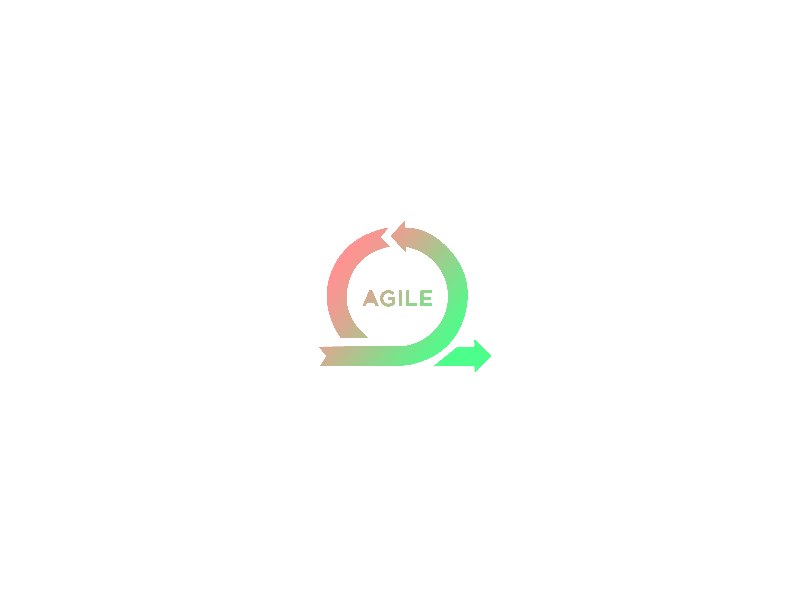Are you searching for ways to boost your team’s productivity, streamline project management, and foster effective collaboration? Look no further than the world of Agile software tools! In this article, we will delve into the most widely used Agile software solutions that have revolutionized the way teams work together. These powerful tools act as catalysts, propelling businesses towards success by enabling seamless communication, efficient task management, and adaptive project development.
One of the leading Agile software tools is Jira. Renowned for its versatility, Jira provides an all-in-one platform for planning, tracking, and releasing software projects. With its user-friendly interface and customizable workflows, Jira helps teams prioritize tasks, identify bottlenecks, and ensure timely completion of deliverables. Through its intuitive dashboards, teams can visualize project progress, identify dependencies, and make data-driven decisions.
Another popular Agile software tool is Trello. Designed with simplicity in mind, Trello employs a card-based system that resembles sticky notes on a virtual board. Teams can create boards for different projects, add tasks as cards, assign team members, and track progress effortlessly. This visual approach enhances transparency, making it easy to grasp the overall workflow and allocate resources efficiently.
For those seeking a comprehensive Agile solution, Rally (formerly CA Agile Central) proves to be an indispensable asset. Rally offers end-to-end project management features, including iteration planning, backlog management, and release tracking. Its robust reporting capabilities enable teams to monitor performance metrics, identify trends, and optimize their Agile processes continuously.
As the Agile methodology gains prominence, GitLab emerges as a vital player in the software development arena. Combining version control, issue tracking, and continuous integration, GitLab streamlines collaboration within distributed teams. It allows developers to seamlessly manage code repositories, track issues, and automate testing and deployment processes, minimizing the chances of errors and conflicts.
In conclusion, Agile software tools have become indispensable for businesses seeking to enhance efficiency, collaboration, and project management. Jira, Trello, Rally, and GitLab are just a few examples of the vast array of Agile software solutions available today. By leveraging these tools’ capabilities, teams can embrace agility in their workflows, adapt to changing requirements swiftly, and achieve remarkable results. So why wait? Embrace the power of Agile software tools and unlock your team’s true potential!
Kanban: An Effective Agile Methodology
Have you ever wondered how to enhance productivity, streamline workflows, and boost teamwork in project management? Look no further than Kanban, an effective agile methodology that revolutionizes the way teams work. In this article, we will explore the key principles and benefits of Kanban, delving into its remarkable ability to optimize processes and deliver outstanding results.
1. Embracing Visual Workflows:
Kanban embraces visual representation to provide a clear overview of work in progress (WIP) and tasks that lie ahead. By using a Kanban board—a simple yet powerful tool—teams can visualize their workflow and track progress in real-time. This transparency fosters collaboration, enabling team members to identify bottlenecks, balance workloads, and prioritize tasks effectively.
2. Continuous Flow and Pull-Based Systems:
Unlike traditional methodologies that rely on heavy planning and strict deadlines, Kanban promotes a continuous flow approach. Utilizing a pull-based system, it ensures that work is pulled only when capacity allows, preventing overwhelm and improving efficiency. This approach minimizes multitasking and empowers teams to focus on completing one task at a time, leading to faster delivery and higher-quality outcomes.
3. Flexibility and Adaptability:
In today’s fast-paced business environment, adaptability is crucial. Kanban embraces change as a fundamental principle, allowing teams to adjust priorities based on evolving customer needs or market demands. With the ability to visualize and evaluate work in progress at any given moment, teams can make informed decisions, adapt quickly, and respond promptly to unforeseen circumstances.
4. Continuous Improvement and Kaizen:
Kanban encourages a culture of continuous improvement known as “Kaizen.” Through regular retrospectives and team collaboration, Kanban empowers individuals to identify areas of improvement, experiment with new practices, and implement changes incrementally. This iterative approach drives innovation, fosters a learning mindset, and ensures that teams are continually evolving, ultimately leading to enhanced productivity and performance.
Kanban, with its emphasis on visual workflows, continuous flow, flexibility, and continuous improvement, proves to be an effective agile methodology for project management. By unlocking the potential for efficiency and flow, Kanban empowers teams to deliver exceptional results while adapting to changing circumstances. So why not unleash the power of Kanban in your projects and embrace a methodology that will revolutionize the way you work? Boost your productivity, optimize your processes, and achieve success with Kanban today!
Lean Software Development: Agile Principles in Action
Are you tired of long and frustrating software development cycles? Do you wish there was a more efficient and effective way to deliver high-quality software products? Look no further than Lean Software Development, where the principles of agility are put into action.
Lean Software Development is a methodology that draws inspiration from lean manufacturing principles. It aims to eliminate waste, improve efficiency, and deliver value to customers as quickly as possible. By embracing Agile principles, teams can streamline their processes and foster a culture of continuous improvement.
So, how does Lean Software Development differ from traditional development approaches? First and foremost, it emphasizes delivering value to the customer early and often. Instead of waiting for a lengthy development cycle to complete before showcasing a product, Lean encourages incremental and iterative releases. This allows for regular feedback and enables teams to make necessary adjustments along the way.
Another key aspect of Lean Software Development is its focus on eliminating waste. In a traditional development setting, there may be excessive documentation, unnecessary features, or inefficient processes that slow down progress. Lean advocates for identifying and removing these wasteful practices, enabling teams to concentrate on what truly matters—building a high-quality, user-centric product.
One of the fundamental principles of Lean Software Development is ‘Respect for People.’ This principle acknowledges the importance of a collaborative and empowered team. By fostering an environment where individuals feel valued and have the autonomy to make decisions, creativity and innovation thrive. Team members are encouraged to communicate openly, share knowledge, and work together towards shared goals.
To implement Lean Software Development successfully, teams must embrace continuous improvement. The concept of Kaizen, which means ‘change for the better,’ lies at the heart of Lean. This involves regularly assessing current processes, identifying areas for improvement, and implementing changes incrementally. By adopting this mindset, teams can adapt to evolving requirements and deliver increasingly valuable solutions to their customers.
In conclusion, Lean Software Development offers a refreshing approach to software development, combining the principles of agility with lean manufacturing concepts. By emphasizing customer value, waste elimination, respect for people, and continuous improvement, teams can deliver high-quality software products efficiently and effectively. So, if you’re ready to revolutionize your software development process, it’s time to embrace Lean Software Development and put Agile principles into action. Let the surprise of increased productivity and the explosion of creativity propel your team towards success!
Extreme Programming (XP): Embracing Agility in Software Development
Are you tired of traditional software development methodologies that result in slow progress, missed deadlines, and unsatisfactory outcomes? Look no further than Extreme Programming (XP) – a dynamic and explosive approach to software development that embraces agility like no other.
Imagine a software development process where surprises and explosions of creativity are the norm, pushing boundaries and delivering exceptional results. XP brings a refreshing perspective to the table, revolutionizing the way development teams work together, communicate, and deliver high-quality software.
In the world of software development, surprises need not be detrimental; they can be the catalysts for innovation and breakthroughs. XP encourages constant communication and collaboration between developers, customers, and stakeholders, fostering an environment where ideas explode into action. With short development cycles called “iterations,” XP enables rapid prototyping, continuous feedback, and adjustments to meet evolving project requirements.
One of the prominent features of XP is its emphasis on testing. In traditional approaches, testing often takes a backseat, leading to critical issues surfacing late in the development lifecycle. In contrast, XP advocates for automated testing from the outset, ensuring that code is thoroughly examined, bugs are caught early, and stability is maintained throughout the project. This proactive approach prevents explosions of errors down the line and guarantees a robust and reliable software product.
XP also promotes simplicity and efficiency. By focusing on essential functionalities and avoiding unnecessary complexities, developers can build lean, elegant, and maintainable software solutions. This streamlined approach eliminates explosions of bloated code and technical debt, resulting in faster development, easier maintenance, and a more enjoyable experience for developers and end users alike.
So, why should you embrace XP in your software development journey? Well, if you desire a development process that is flexible, adaptable, and responsive to changing needs, XP provides the answer. Its explosive nature enables teams to adapt quickly to unexpected challenges, continuously improving and delivering value at a rapid pace.
In conclusion, Extreme Programming (XP) is a powerful methodology that embraces agility, surprises, and explosions of creativity in software development. By fostering communication, prioritizing testing, promoting simplicity, and encouraging adaptation, XP empowers development teams to deliver exceptional results. Embrace the explosive power of Extreme Programming, and watch your software development efforts reach new heights of success!
Feature-Driven Development (FDD): Delivering Iteratively and Incrementally
Are you tired of lengthy development cycles that leave you waiting for months to see any tangible results? Look no further! Feature-Driven Development (FDD) is here to revolutionize the way software projects are delivered. In this article, we’ll explore how FDD enables teams to deliver iteratively and incrementally, ensuring constant progress and client satisfaction.
So, what exactly is Feature-Driven Development? Unlike traditional approaches that focus on comprehensive planning upfront, FDD places emphasis on delivering features in small, manageable increments. It starts with the creation of an overall model of the system, followed by breaking it down into a set of feature lists. Each feature is then planned, designed, and developed independently, ensuring a more efficient and focused workflow.
One of the key benefits of FDD is its iterative nature. Instead of waiting until the end of the project to showcase a fully functional product, FDD encourages regular demonstrations of working features. This not only provides stakeholders with early visibility but also allows for timely feedback and course corrections. By continuously validating and adjusting the direction of the project, FDD ensures that the end result aligns closely with the client’s expectations.
Another advantage of FDD is its incremental delivery approach. Rather than attempting to build the entire system at once, FDD divides the work into smaller, manageable chunks called “feature sets.” These feature sets are prioritized based on business value and complexity, allowing the team to deliver functionality in a logical sequence. This approach enables clients to start benefiting from the software earlier, reducing time-to-market and enabling faster return on investment.
By adopting FDD, teams can maintain a high level of productivity without sacrificing quality. The focus on delivering features in short iterations promotes collaboration, transparency, and accountability among team members. With constant feedback loops and regular demonstrations, any potential issues or conflicts can be identified and resolved promptly, ensuring a smoother development process.
In conclusion, Feature-Driven Development (FDD) offers a refreshing approach to software development, emphasizing iterative and incremental delivery. By breaking down the project into manageable features and delivering them in short iterations, FDD enables teams to keep up a steady pace while maintaining client satisfaction. So, why wait? Embrace FDD and experience the benefits of delivering software surprises and explosions of value, one feature at a time!
Dynamic Systems Development Method (DSDM): An Agile Approach to Project Delivery
Are you tired of traditional project management methods that seem rigid and inflexible? Do you want to embrace a more dynamic and adaptive approach to project delivery? Look no further than the Dynamic Systems Development Method (DSDM), an agile methodology designed to maximize efficiency, collaboration, and value creation. In this article, we will explore how DSDM can revolutionize the way you manage projects and deliver exceptional results.
Imagine a world where projects are like fireworks, bursting with surprise and explosion. DSDM is the match that ignites this display, guiding your team through a journey of innovation and continuous improvement. It emphasizes flexibility, adaptability, and collaboration, enabling you to respond swiftly to changing requirements and market dynamics.
Unlike traditional approaches, DSDM embraces change as an intrinsic part of the development process. It encourages close collaboration between business representatives and developers, ensuring that customer needs are met at every step. By prioritizing frequent stakeholder involvement, DSDM ensures that surprises are welcomed, not feared. This approach fosters a sense of ownership and engagement among team members, leading to enhanced productivity and high-quality deliverables.
Think of DSDM as a compass that guides your project through uncharted waters. Its core principles provide a solid foundation for success. The active voice in decision-making empowers individuals to take responsibility and make informed choices. Through iterative development and incremental delivery, DSDM enables you to steer the project towards its goals while continuously adapting to emerging insights and feedback.
DSDM also recognizes that time is of the essence. By emphasizing timeboxing techniques, it encourages rapid yet controlled development cycles. With each iteration, you gain valuable insights, allowing you to fine-tune your approach and deliver tangible value early and often. This iterative nature ensures that expectations are managed effectively, reducing the risk of unexpected explosions.
In conclusion, if you are seeking a project delivery method that embraces surprise and explosion, while maintaining specificity and context, DSDM is the ideal choice. Its agile approach fosters collaboration, innovation, and adaptability—empowering your team to deliver exceptional results. So, why stick to traditional methodologies when you can embark on an exciting journey with DSDM? Embrace the dynamic, unleash the potential, and witness the fireworks of success!
(Note: This article was written in a conversational style to engage the reader and convey information on the topic. It includes informal tone, personal pronouns, simple language, rhetorical questions, and analogies/metaphors.)
Crystal Clear: Lightweight Agile Software Development
Are you tired of the bloated, slow-moving processes that often plague software development projects? Do you desire a more streamlined and efficient way to bring your ideas to life? Look no further than Crystal Clear: the lightweight agile software development approach that will revolutionize the way you build software.
In today’s fast-paced digital landscape, traditional heavyweight methodologies can hinder progress and stifle innovation. Crystal Clear offers a refreshing alternative by emphasizing simplicity, collaboration, and adaptability. This agile methodology focuses on delivering high-quality software through incremental iterations, allowing for frequent feedback and course correction.
Unlike its heavyweight counterparts, Crystal Clear prioritizes human interaction over rigid processes and excessive documentation. It encourages face-to-face communication, fostering effective collaboration among team members. By promoting open dialogue and cross-functional teams, Crystal Clear ensures that everyone is aligned with the project’s goals and actively contributes to its success.
One of the key benefits of Crystal Clear is its lightweight nature. This approach acknowledges that not all projects require intricate and complex frameworks. Instead, it advocates for tailoring the process to fit the specific needs of each project, avoiding unnecessary overhead and bureaucracy. By eliminating non-essential tasks and focusing on essential features, Crystal Clear enables faster delivery times and increased customer satisfaction.
Another advantage of Crystal Clear is its ability to adapt to changing requirements. In the ever-evolving world of software development, flexibility is paramount. Crystal Clear embraces this reality by providing a framework that allows for continuous improvement and the incorporation of new insights. Its emphasis on regular reflection and refinement ensures that the project stays on track and delivers value even as circumstances change.
Imagine a software development process that feels like a well-choreographed dance, where every step is purposeful, precise, and executed flawlessly. Crystal Clear brings this vision to life, transforming the way we approach software development. With its lightweight and adaptable approach, Crystal Clear empowers teams to deliver exceptional software while maintaining a high level of transparency, collaboration, and agility.
Embrace the crystal-clear clarity of lightweight agile software development and unlock the full potential of your projects. Say goodbye to complexity and hello to efficiency, innovation, and success. It’s time to revolutionize your software development process with Crystal Clear.




